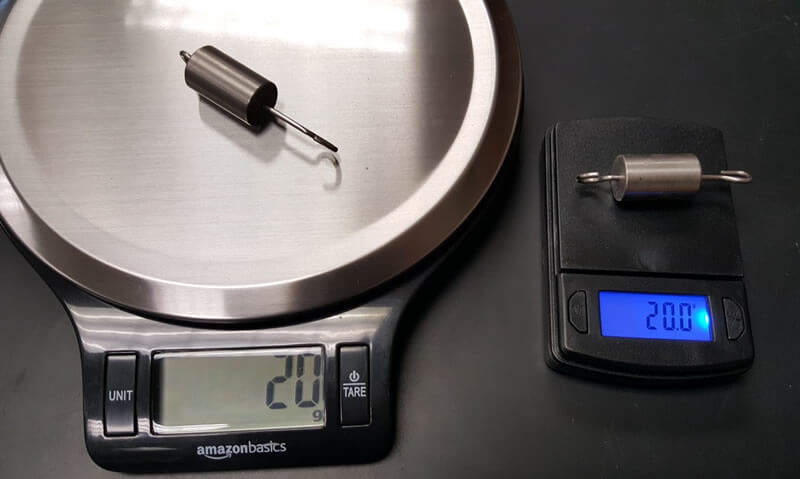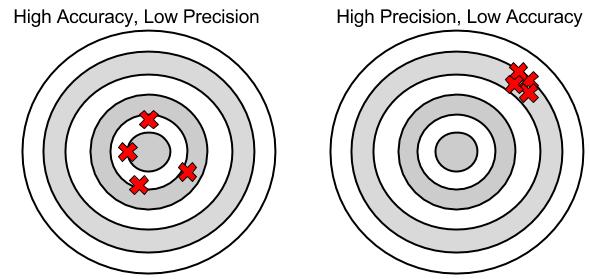I was in the market for a new digital scale, mainly for the osmosis experiment where students must weigh dialysis tubes. I found that my one digital scale just wasn’t enough for 20 students to gather data. Unfortunately, digital scales you buy from scientific suppliers are often very expensive and I really don’t need the kind of precision required in chemistry experiments.
I broadened my search to Amazon, where I found an assortment of digital scales. The first one I bought was a pocket scale that was about five dollars and works great, though it was a little on the small size and I worry about kids walking off with it. The next one I bought was labeled as a kitchen scale on Amazon, and was much larger and had an appearance similar to ohaus scales. Unfortunately, it only measured to whole numbers. Weird!
I almost sent it back but decided that I could still use it to explain the difference between accuracy and precision in measurements. The scale is accurate, but it isn’t very precise. Shown below are 20g weights on the kitchen scale and on the pocket scale.

Explanation:
Accuracy: the degree at which the result of a measurement conforms to a correct value; basically it means that the value measured is close to the expected or target measurement. If it were a bulls-eye, you would be close to the center.
Precision: Precision is a measurement of how often you get the same measurement over and over again, or how close the measured values are to each other.
Precision also refers to a numeric value that describes the number of digits (or significant figures) or decimal places in a measurement. 2.42 is a more precise number than 2.4.

So when it comes to buying equipment and lab supplies from amazon, definitely read the fine print. The low-precision scale will not work for any of my labs, but I can still use it in demonstrations. I also wonder how great of a job it would do for cooking, it seems to round down in odd ways: a 2.5 weight was measured as 2.0.

